Friday Fun – Funny Dog Video of the Week
Its Friday again – doesn’t the week seem to fly on by. Today here are three funny dog videos from the last week that brought a smile to our face.
Hit the break to see the videos.
Its Friday again – doesn’t the week seem to fly on by. Today here are three funny dog videos from the last week that brought a smile to our face.
Hit the break to see the videos.
My friend told me a hilarious story about his dog the other day. His dog is called Bengie and ol’ Bengie has quite the clever head on his shoulders.
A couple of months ok my friend asked his mate to help install a dog flap on the backdoor. After setting it up he and his mate wanted to test it out, so grabbing a dog treat they went outside to try and coax Bengie out through the door. Well Bengie was having none of it, which is strage for a couple of reasons.
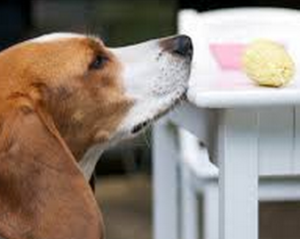 Firstly Bengie is people oriented so if everyone is outside he would just naturally migrate to where everyone is. Secondly he loves food. Nuff said.
Firstly Bengie is people oriented so if everyone is outside he would just naturally migrate to where everyone is. Secondly he loves food. Nuff said.
So they go back in and get a biscuit, give Bengie a little bit then go outside with the rest of it and wait. Still nothing. Hmm thats weird.
Back in they go one last time and there is good ol’ Bengie up on the small table eating the rest of the biscuits straight from the plate!
What a clever cookie. Sorry couldn’t help it.
If you love large dogs then today’s post is for you. We are going to have a look at three popular large dog breeds and why you should choose them for your new pet!
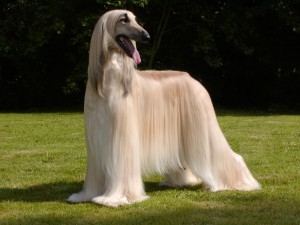
Afghan Hound
One of the oldest dogs in existence the Afghan Hound is a combination of power and elegance. This regal breed sets some real style and is dubbed the “Aristocrats” of the noble dog world.
It is distinguished by its thick, fine, silky coat and its tail with a ring curl at the end.
This regal look comes with a regal behaviour though. They are independent thinkers who don’t particularly care about pleasing you, they may display passive resistance by bracing their legs and refusing to move. You must show them, through absolute consistency, that you mean what you say.
Afghan Hounds need access to a large fenced area — fenced because these independent dogs have been known to take off and not come back. If there is a dog club in your area, get your Afghan Hound involved in lure coursing (chasing a mechanised lure around a track or across an open field). This is an appropriate outlet for the full-speed galloping behaviours that are “hardwired” into his genes.
Its that time of year again! As we roll ever closer to Christmas its time again to get our pets involved with this age old tradition.
To start off the countdown today we bring you Christmas Pugs.
Love pugs & christmas then you will love this clip. Hate christmas but love pugs? Still worth checking out! Love christmas but hate pugs take a peak anyway. Not a fan of either….well we tried 😛 Read more
Dogs whose behavior cause trouble to the owner, environment, as well as the dog, endanger health and safety have the so called “untrainable dog syndrome”. It is important to note that there is a difference between teaching the dog certain behavior and solving problematic manners.
Troubling behavior may occur as a result of the emotional state of the dog, high stress levels, unfavorable effect of the environment where the dog resides, training the dog with the use of force, pain or any other health disorder. Untrainable dog syndrome requires full attention and individual approach of the both dog owner and the dog.
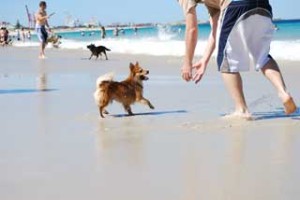
Professional help in solving the problematic manners is intended for owners whose dogs exhibit behaviors such as aggressiveness, fright, sensitivity to stimuli, frequent barking, destructive behavior, going to bathroom indoors, hyperactivity, excitement and euphoria tendency, frequent licking or biting of body parts, running after everything that moves such as cyclists and joggers. This sort of behavior may cause you to lose your temper, start acting toughly and have less patience than usually, so a few tips may help you and your dog see eye to eye.
Monitor your dog; keep a diary of his behavior, the way he acts in certain situations. Try isolating the one thing that bothers you the most and see if you can recall the cause and the time it started. Maybe it was something that has developed gradually over time.
Just like with your dog, keep a diary of your behavior for a week. Write down how you react when your dog acts problematically, whether you scream at him or you do nothing at all as you think nothing can be done. Do you ever lock him up somewhere as a punishment? Do you allow your feelings to take over? If you punish him or yell you will only frighten the dog and destroy the bond between you, but on the other side if you do nothing you encourage his behavior.
After you realize what bothers you the most and learn how to react you can make some changes.
Start by acting differently. Stop his bad behavior immediately; you might put him on the leash even if he is inside the house, and keep him close to monitor him.
Shouting and screaming never works, so go to him and speak peacefully, lovingly and quietly, tell him things will improve for both of you very soon. Hug him, make him calm down.
Try these tricks for a week and see if things change. Ask yourself whether the unwanted behavior manifests as often as before and to what extent? Is it as grave as it used to be and how does it affect you, are you still as upset as you were a week ago? Also keep an eye out for the things that have improved – your relationship and his behavior.
Remember that untrainable dog syndrome grows over time so the correction won’t be easy and quick, but if you change your ways the dog will as well. Just have enough patience and be determined.
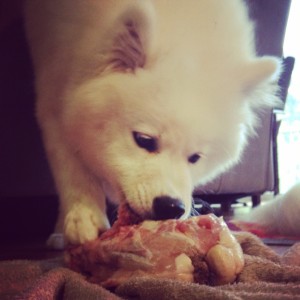 Today many pets suffer from health conditions that were rare or didn’t even exist before kibble became popular. Diseases like cancer, diabetes, food allergies and obesity are some of the most common health issues in dogs fed commercial or human food. Numerous researches have shown a strong connection between the health problems in dogs and the food they eat.
Today many pets suffer from health conditions that were rare or didn’t even exist before kibble became popular. Diseases like cancer, diabetes, food allergies and obesity are some of the most common health issues in dogs fed commercial or human food. Numerous researches have shown a strong connection between the health problems in dogs and the food they eat.
For this reason there’s a huge shift in the manner dog owners are feeding their pets. The overwhelming trend is moving towards different variations of fresh and healthy homemade meals, as well as raw food, based strictly on meat or a combination of raw meat and vegetables, fruits, eggs and other nutrients suitable for dogs.
It seems that the dogs like the change, especially raw diet which seems to help them overwhelm health issues such as bad breath and gum diseases, skin problems, kidney and liver failures. It seems that balanced diet consisted largely of homemade broth, various combinations of meat, bones, and organs with or without a healthy complement of vegetables, fruits, and dairy prevent illnesses that come with a diet heavy in fillers, flavors, artificial colors and preservatives.
What are the other benefits of raw feeding? If you ask the owners, they will assure you that their pets have clean, shiny and white teeth, fresh breath, and almost no body odor. Raw fed dogs have more energy but, at the same time, are less hyperactive which means that they can be easily controlled. According to some, raw meat makes dogs aggressive but that is not true. The only change is that dogs really love their raw and they will probably try to guard this type of food better than kibble.
What else can forty to sixty per cent of raw meaty bones bring to your dog? Chicken necks, legs, and backs, together with rabbit, duck, pheasant, and occasionally whole fish will give your canine friend a firm and muscled body and stronger immune system. If your dog is old and his teeth are missing so he finds it hard to chew bones or you are afraid of him choking – grind them up. Even the old dogs with arthritis show more mobility and energy when they eat the way their ancestors did.
We all know that vitamins, minerals, and enzymes are destroyed by cooking and that intense heat reduces the nutritional value of food. But did you know that cooked food also affects your dog’s stool? Not to mention the kibbles. When dogs are fed raw the poop is small, almost odorless, firm and easily decomposed. The only difference can be noticed during the period of adaptation to raw after commercial food.
Although there are many benefits of raw food, the fact is that this kind of feeding is still relatively unexplored. This means that some of the benefits mentioned above are not scientifically proved, but information provided by the dog owners. We hope that this will change in the future and that we’ll be able to give you more tips on how to feed your dog.
As a pet owner, you probably want to treat your companion the best possible way. You want him to be happy, to be well cared for and to eat the finest food. This makes it easy for dog owners to slip into trap of allowing their four-legged friends to eat whatever they like. But, is this always in their best interest? When it comes to food, it certainly isn’t. The dog, just like the kid, doesn’t always know what is best for him and it’s the owner’s responsibility to take care that his pet’s food intake is healthy and nutritious. If you wouldn’t allow junk food to your child, why allowing it to the dog?
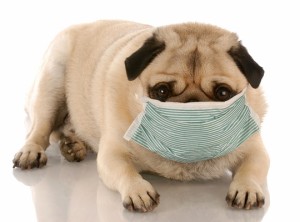
Many dog owners claim that their pets are picky eaters and that they would rather starve to death than eat healthy food. I have only one thing to say – your dog doesn’t know what’s good for him. It is your responsibility to keep your pet in good shape. Of course, if your canine friend suddenly starts refusing food and skipping meals or changes its behavior in any other way, take him to the vet. He might suffer from some health issues. But, if it turns out that he’s fine, it is time to reconsider his diet. It is possible that he got bored with the same type of food. Or he may just got spoiled because you usually mix in something he likes in order to improve the taste of food he isn’t fond of. By doing this on regular basis, you’ve created a picky eater.
But, it’s not the end of the world, there’s still much room for improvement. The fastest way is to start offering your dog some quality food and to be persistent. If it refuses to eat it, just take away his bowl and don’t give him anything till the next meal. If he refuses to eat again, pick the bowl up and put it away. He’s probably holding out waiting for something he likes better and if you give in, he will become even choosier. But, no dog will starve himself and when he’s hungry enough he will eat.
You have to keep in mind that “junk” food will certainly harm your dog, both long term and short term. Fat trimmings, small bones and sugary food might sound like a real treat to your dog, but you have to know that such food will do no good to your dog’s health. Even commercial pet food can be of poor quality. So, when you’re buying it be sure to read what’s written in the back of the package. It should have very high meat content and minimum of waste and by-products, as well as food additives, colors or anything artificial.
Remember, if you offer your dog decent food, there’s no reason why it shouldn’t eat it. However, if it shows any hard-to-please behavior, think about the possibility that you are confusing him by sending the unclear messages.
Dealing with problematic dog behavior is a team work in which the owner and the dog behavior consultants participate, and, if necessary, so do veterinarians and other therapists. The ultimate success, visible as a change in the dog’s behavior, is only possible with the maximum commitment and effort which is the reason why it is crucial to know what to look for when choosing a dog school.
The suitability of the person who is giving the professional help is the first of many steps on the road to a better and happier coexistence with your dog.
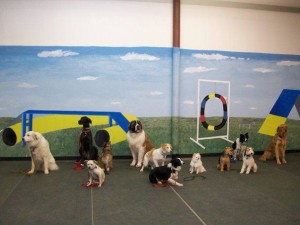
It is important to stress out that there is a difference between teaching a dog certain commands, such as heal and fetch, and solving problematic behaviors like aggression, destruction, urinating inside and barking too much. Accordingly there is a difference in the level of qualifications and knowledge among persons conducting obedience classes (course leaders, instructors) and those engaged in counseling when dealing with problematic dog behavior (dog behavior consultants).
With this in mind, when looking for a dog schools and someone who will help you with your dog, look for a person who has completed their educations in the field of animal behavior and works using only positive methods and new concepts. A positive and all-inclusive approach based on scientific findings is far more effective than the traditional ones based on wrong assumptions about dog behavior, such as dominance, alpha status, and the use of violent and rough techniques which will only result in bigger problems and the destruction of the dog-owner bond.
Make sure they treat dogs with love and respect – even though this should be a main condition for this type of job that’s not always the case. A person who doesn’t show empathy for dogs, their needs and feelings but considers them to be mindless beings who only act upon their urges is in fact a person who has very little knowledge about dogs and therefore can’t give your dog the help he needs.
One of the most important things you should pay attention to when picking a school for your dog is whether they use devices which cause dogs discomfort and pain. If that is the case stay away from them! No matter the “weight” of the problem, there isn’t a single reason or excuse for hurting a dog. Devices such as chokers, spiked training collars and dog shock collars in anyone’s hands leave adverse effects on the dog’s health (spine, thyroid, heart) as well as the dog’s behavior.
Don’t go to a school which doesn’t even want to meet you or your dog. Just like a veterinarian can’t know what your dog’s sickness is without examining him first, a dog trainer shouldn’t draw conclusions about the dog’s behavior without previously seeing the dog, meeting the family he lives with and gathering enough information to see if the dog needs a dog school or just obedience classes.
In conclusion you should look for a dog school whose only object is to find the cause of the problematic behavior; the reason why the dog acts the way he acts in certain conditions and situations.
Many people stress about what they should do with their dog when the baby comes – should they give the dog away or it’s going to be safe for the baby? It can all turn well if you prepare your dog for the new situation, so here are some things you should keep in mind when preparing your dog for the newborn baby.
Your dog will sense the excitement about the arrival of the new family member, but it’s not a bad idea to introduce him with the newcomer as well.
When he’s in the good mood give your dog something that belongs to the baby, such as shirt or a cap. Praise him while he smells baby’s things so he can develop positive and good feelings toward the baby.
When the baby is first brought home one person should hold the baby while the other one holds the dog on a short leash. If he behaves well let him smell the baby, if you however feel any form of aggression from the dog or the baby starts crying cut the introduction and postpone it for a couple of days. The dog should be kept under control but without tension. Later on, when both the baby and the dog relax you won’t need the leash anymore but don’t leave the dog alone with your newborn.
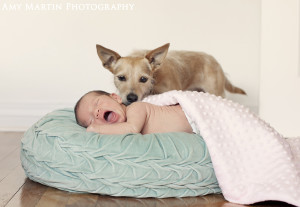
Every time you bring your newborn close to the dog, say his name gently, show him to the baby and interpret his behavior. If baby starts crying due to sudden bark take her to your arms, comfort her and explain that is normal and that’s the way dogs talk.
Before the newborn your dog had all the attention in the family and that will most certainly change, but pets usually behave well and know their place in the family so you shouldn’t worry too much about the dog being jealous. Whether the animal will feel mismatched, neglected and standoffish upon the arrival of the new member is completely up to you and your behavior toward the dog and the baby. If the family habits and customs you shared with your dog don’t change drastically and if you introduce the baby and the dog in the right way – there is nothing to be afraid of.
It might happen that the dog pees on the crib, stroller or a place where the baby spends a lot of time, but this shouldn’t be interpreted as jealousy or bad behavior, this is just a way the dog expresses fear of the baby and masks her scent with his. So don’t scold your dog for doing this but allow him access to the baby’s crib, clothes and blankets. Again, don’t make your dog feel neglected because of the arrival of the new family member.
While preparing your dog for the your newborn baby it is important to mention that, despite of the amount of time you plan to dedicate to the child (which is perfectly normal) you always have to find at least a little bit of time for your pet. Also, avoid any sudden changes of what the dog is used to, such as the feeding time.
Are you making these 10 dog training mistakes?
Many people say that there is nothing better than having a dog. That is certainly true but do you know what’s even better? Having a trained dog. Many people try to train dogs themselves and that is perfectly fine if you know how to do it and how to avoid making some typical mistakes.
You should always be consistent! Avoid using various words for the same command. It will only confuse your dog and he won’t know what he has to do. For instance if you used “Heel” you can’t expect the dog to listen to you if tell him “Walk by me.”
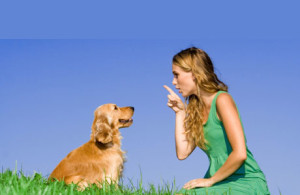 Start small. Just because you see a dog on TV do a trick doesn’t mean you can expect your dog to know it or learn it in a day. Be patient, start with some simple commands and then work toward the more complicated ones. And be realistic of your dog’s abilities.
Start small. Just because you see a dog on TV do a trick doesn’t mean you can expect your dog to know it or learn it in a day. Be patient, start with some simple commands and then work toward the more complicated ones. And be realistic of your dog’s abilities.
In any scenario, not just dog training, one of the worst things you can do is to physically punish your dog. It will only make the dog afraid of you, start acting aggressively toward you or people in your surroundings, and it will ruin your relationship.
Start early, when he is just a puppy. It will make it easier as you won’t have to put a lot of obedience training.
Don’t give up after one try. It might take some time but your dog will get the hang of the trick eventually. Look at yourself, you don’t learn everything at the same pace, some things you can learn faster and some take time.
Giving your dog treats when he does what he’s suppose to is the best encouragement. If you fail to reward him he won’t know if he did something right. Ignoring bad behavior is just as bad; you shouldn’t overlook it or even worse give him a treat while hoping he will do better next time.
Dogs pay a lot of attention to the sound of your voice and if you’re in the bad mood while training them they will notice. They will notice that your tone of voice and body language are different and he won’t be able to connect the command with the action.
Some people think that rubbing a dog’s nose in urine helps with the learning process but it doesn’t. The only thing it does is hurt your dog’s nose.
You want your dog to learn who has control so don’t let him eat at the same time you do, give him food after you’ve finished.
Puppies don’t have a large attention span so it is best to keep the lessons short. About 15 minutes a day will do the trick and make your dog learn its trick.
So, keep it short, have patience, talk cheerfully, do it consistently and your dog will in no time learn when to sit, be quiet and when to jump in your arms and kiss you.
